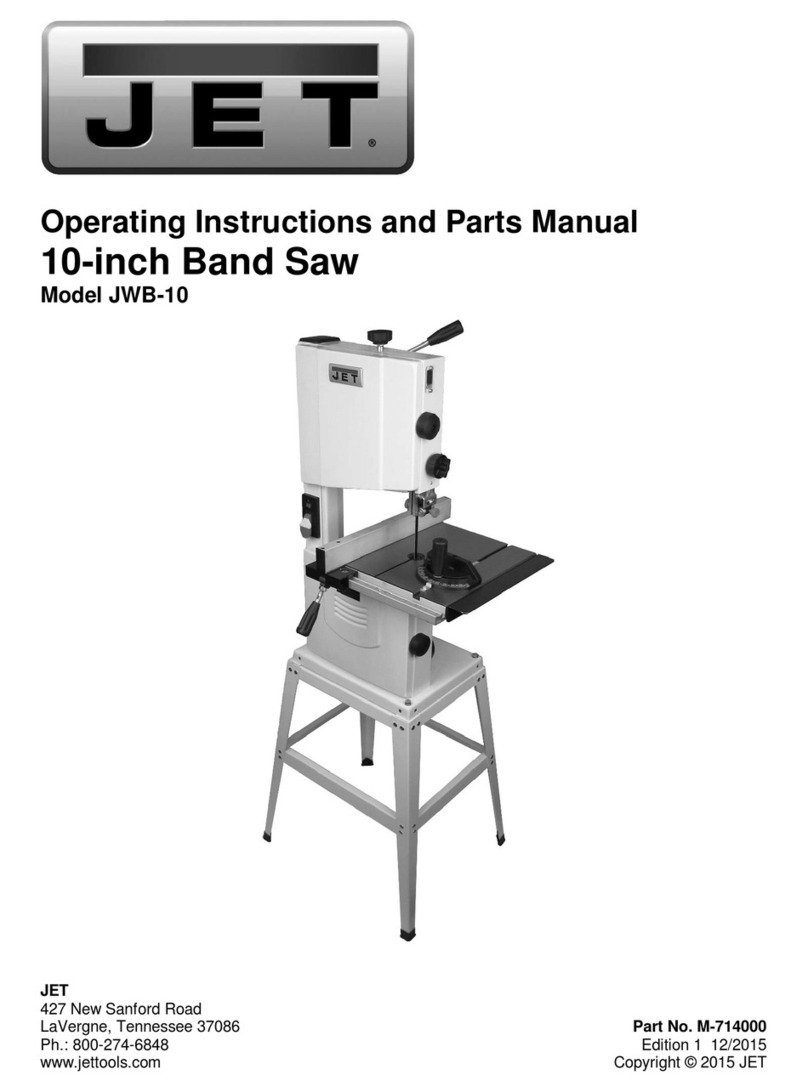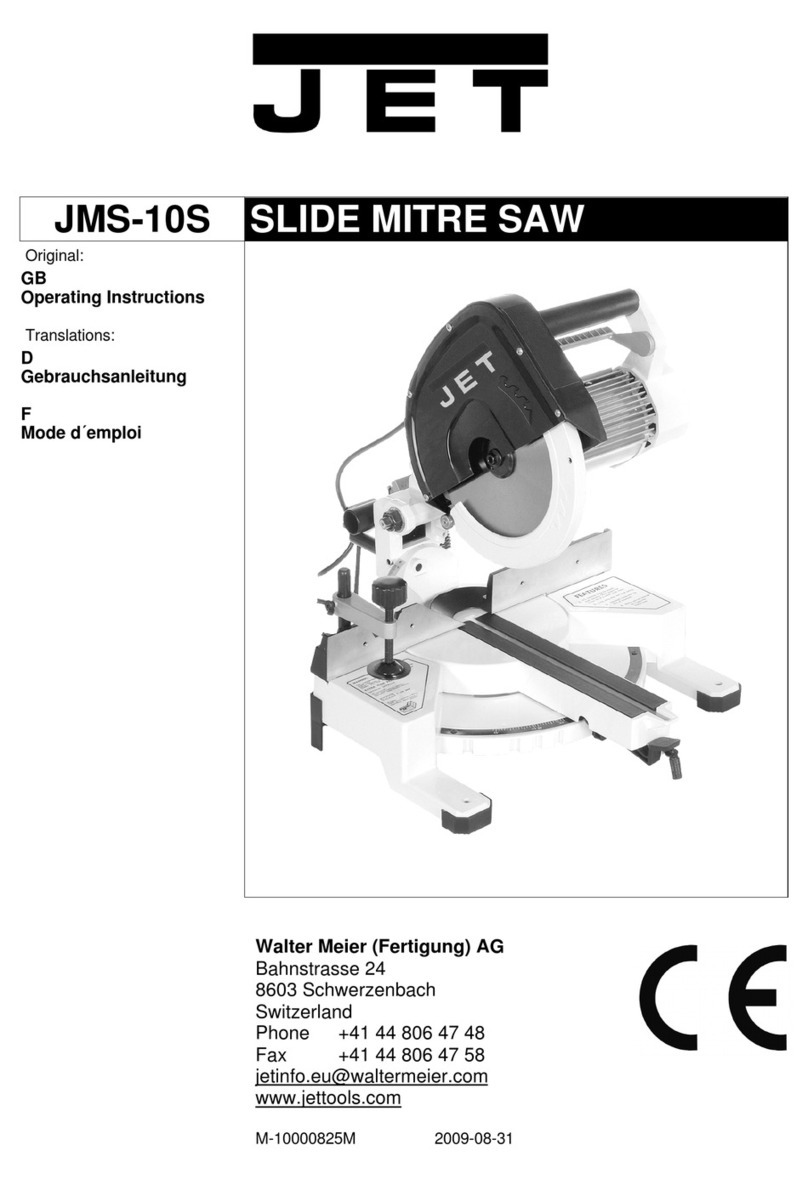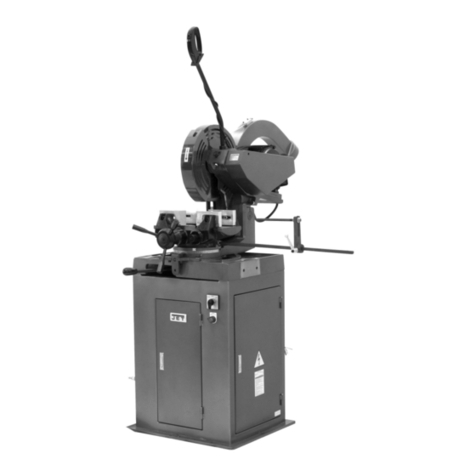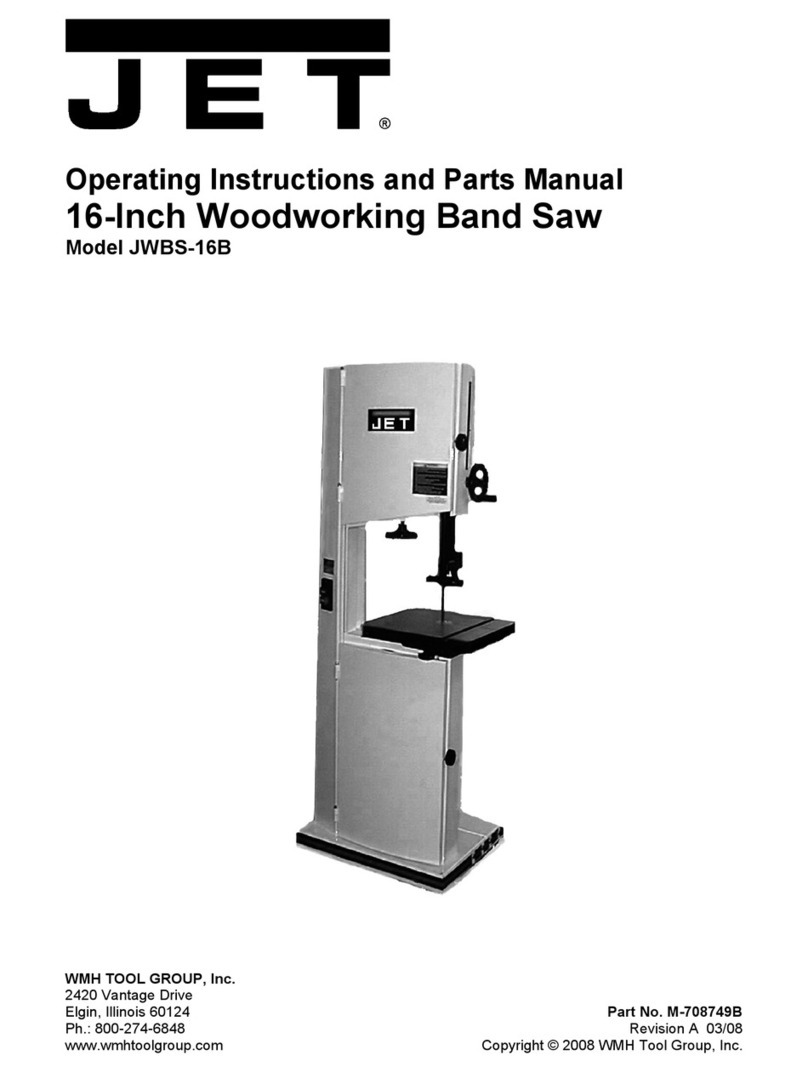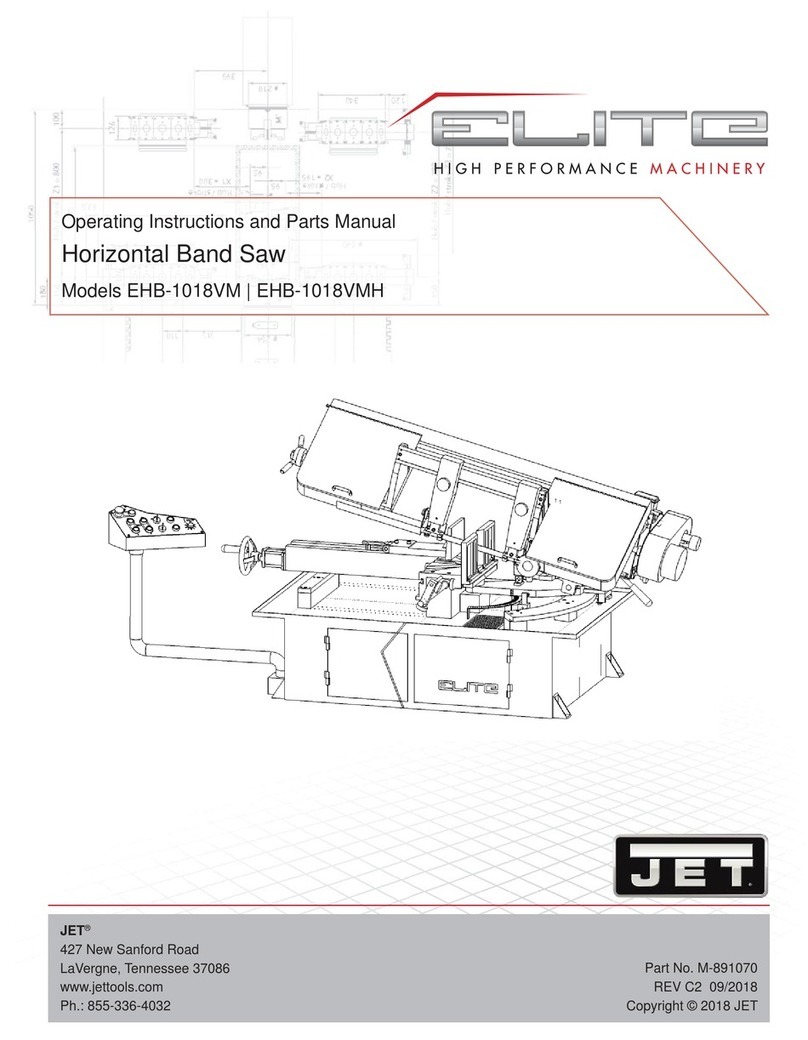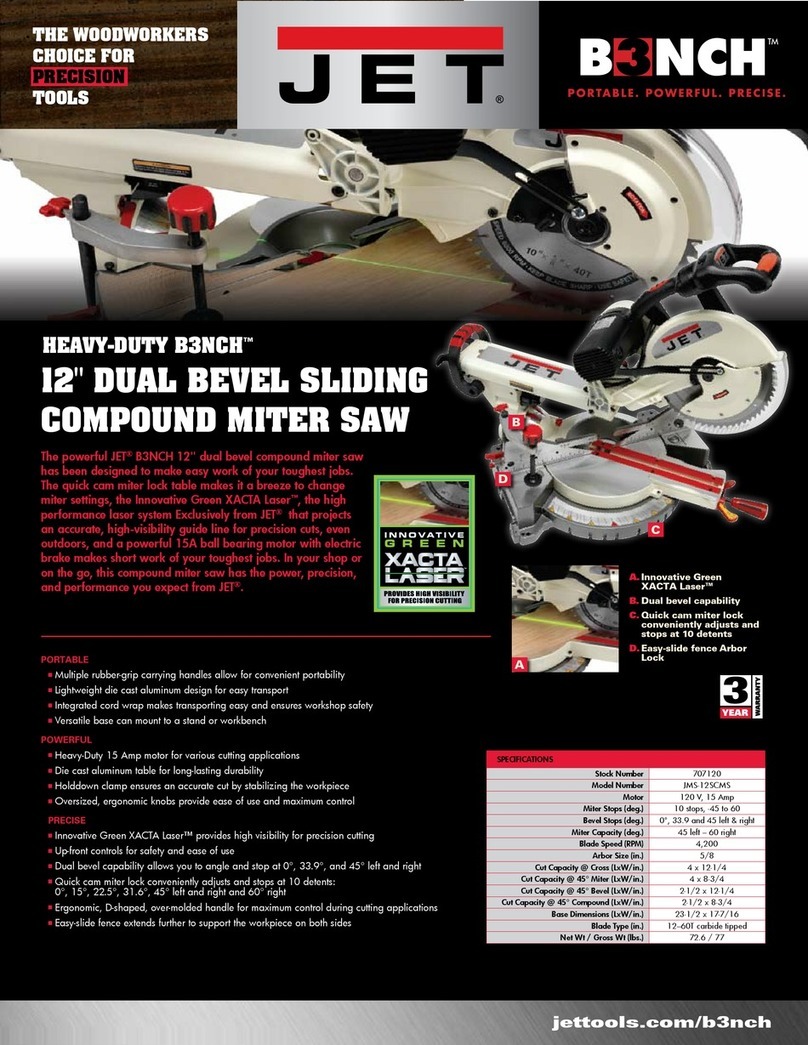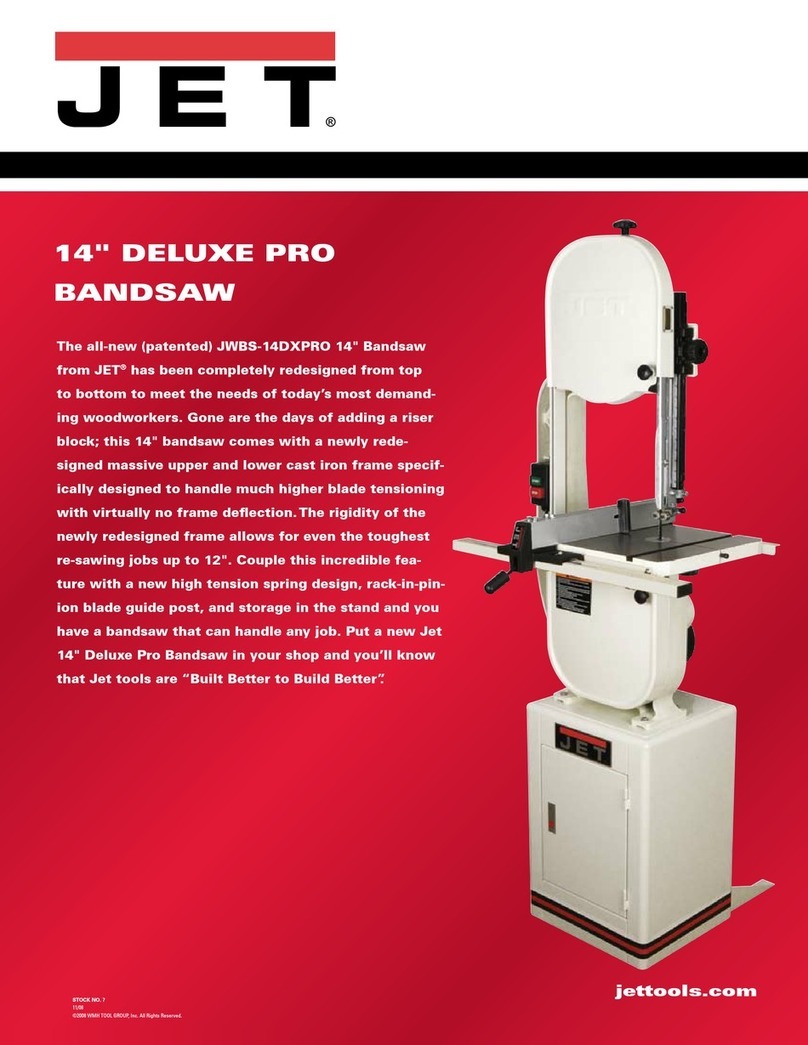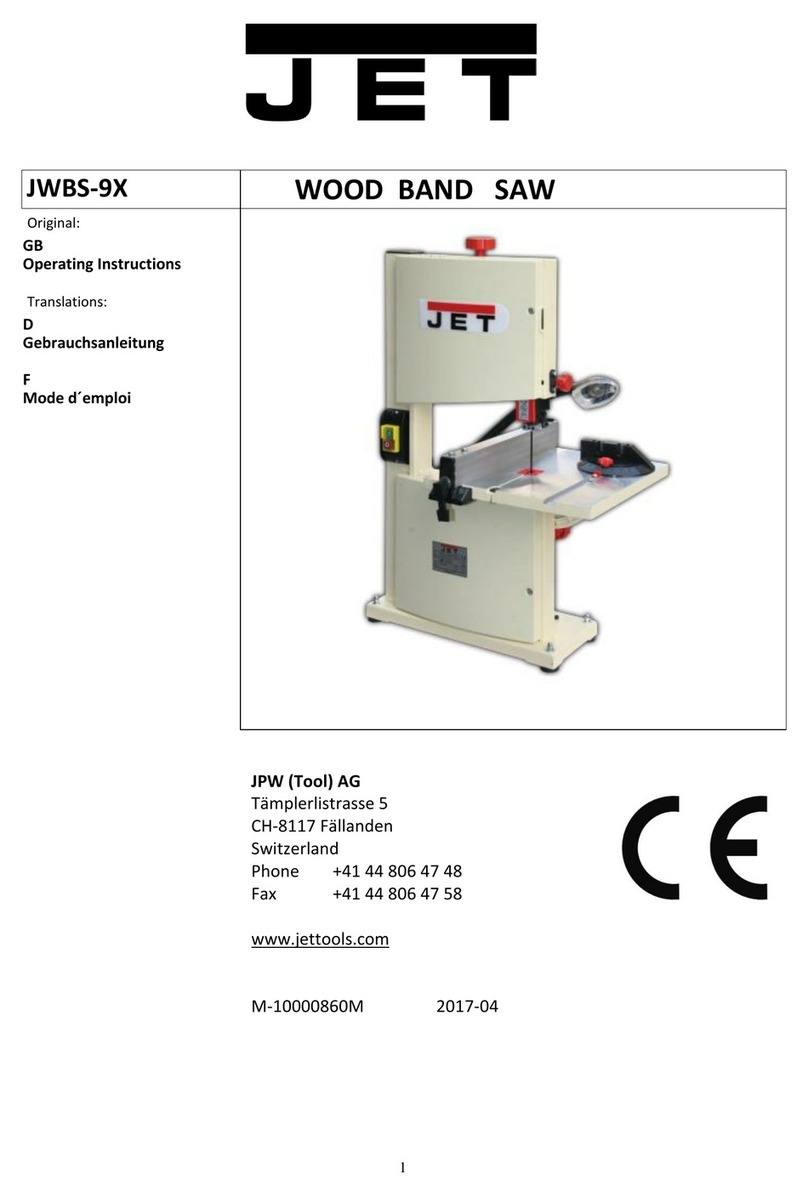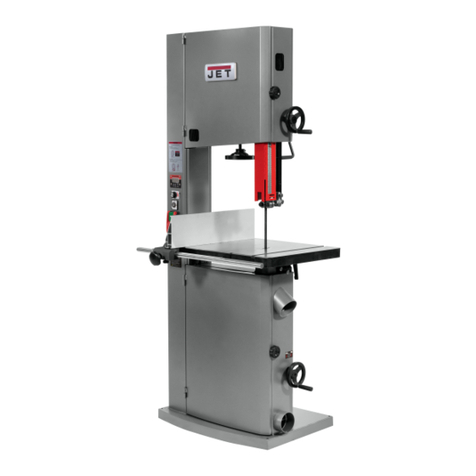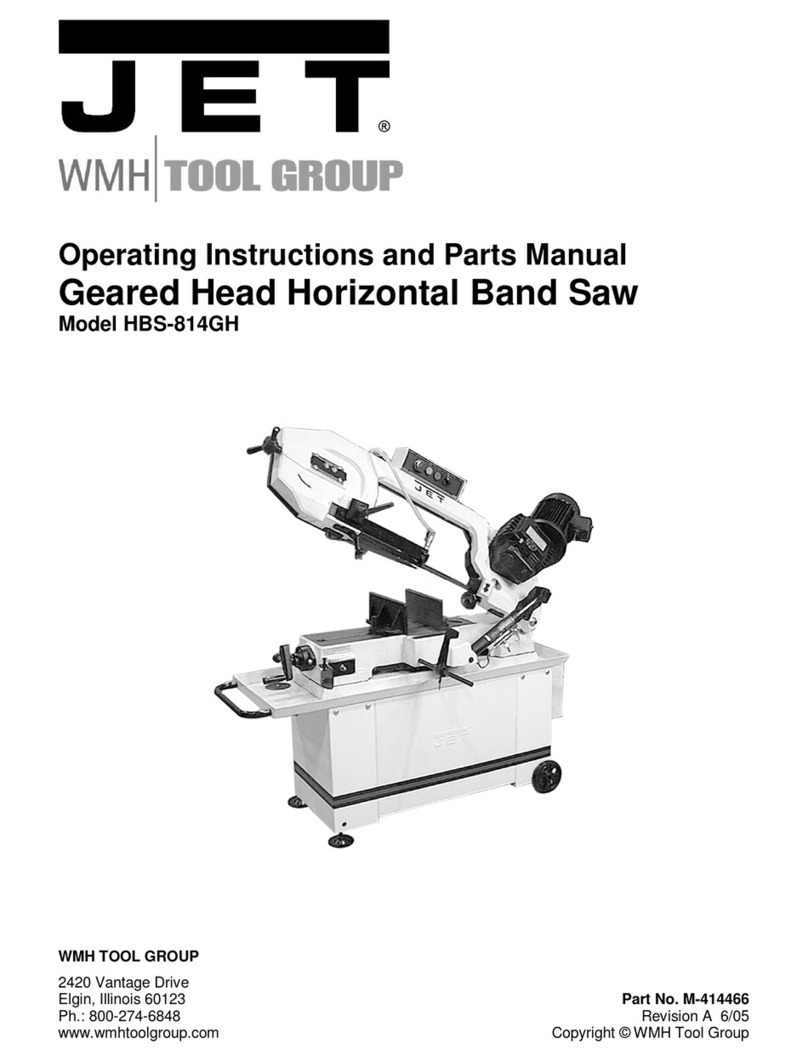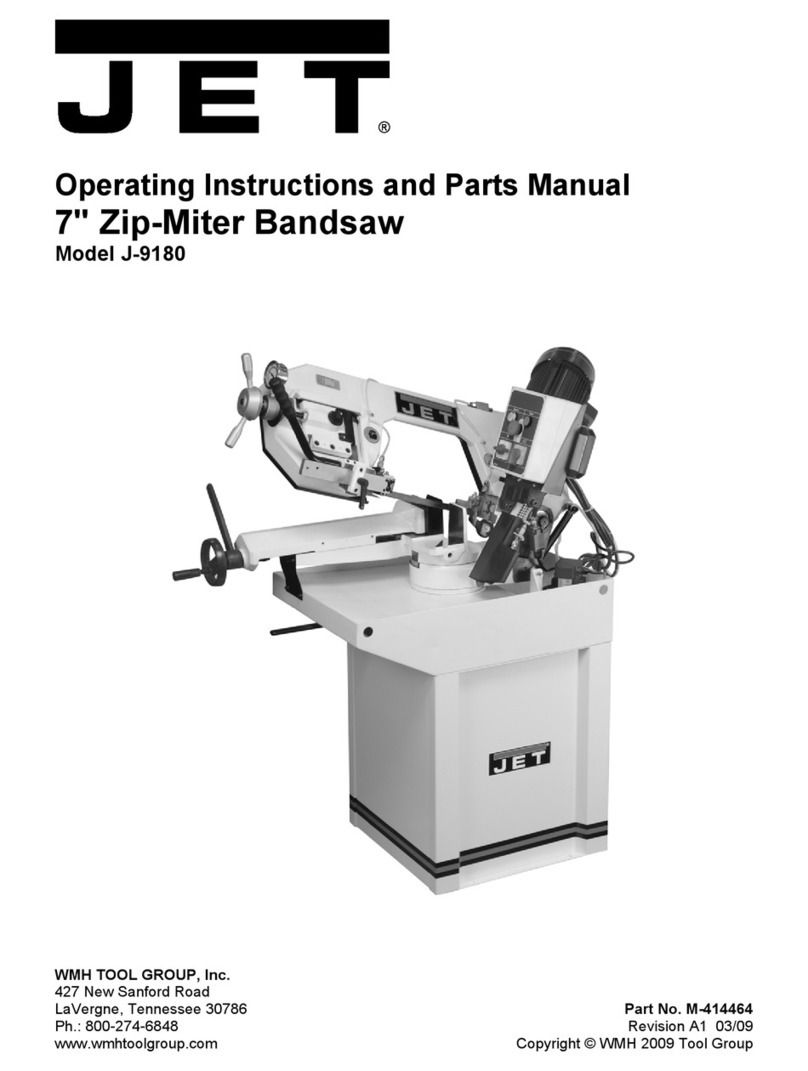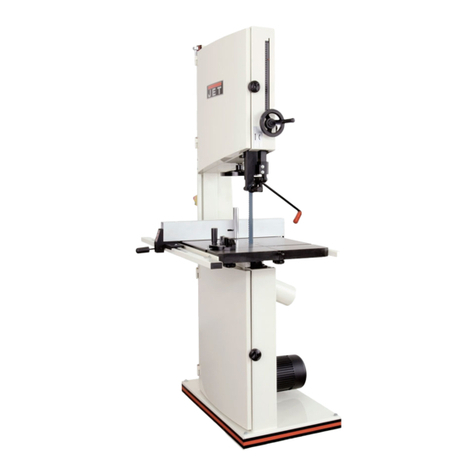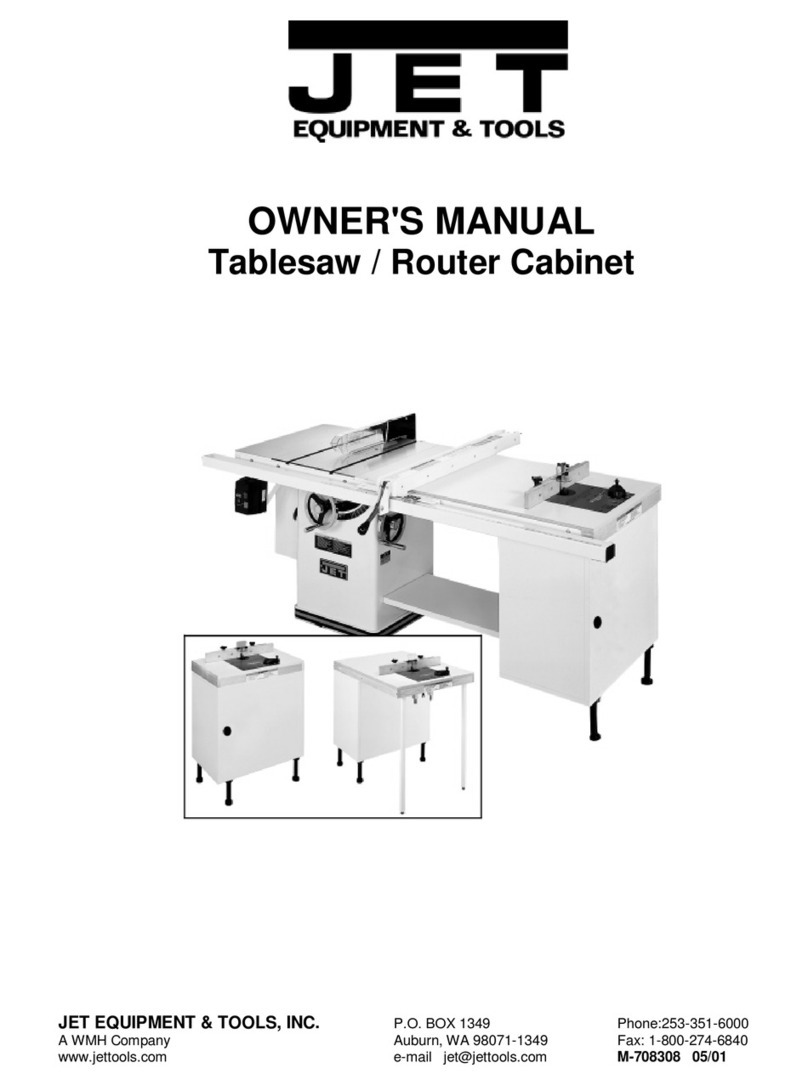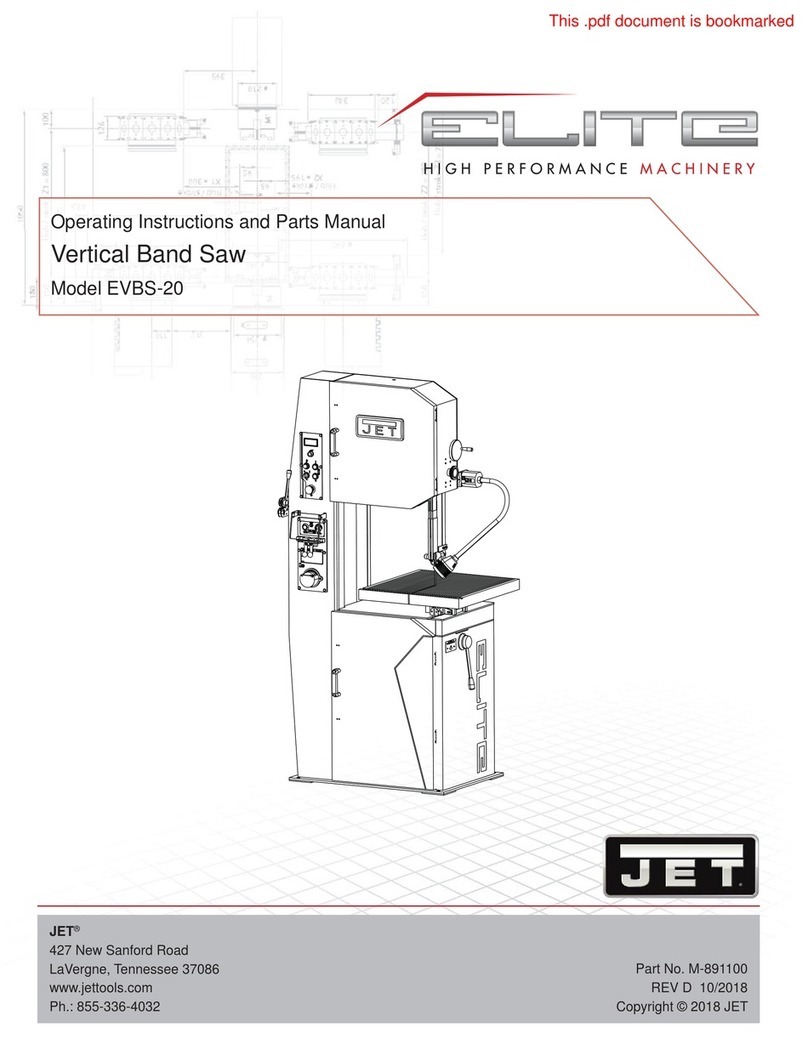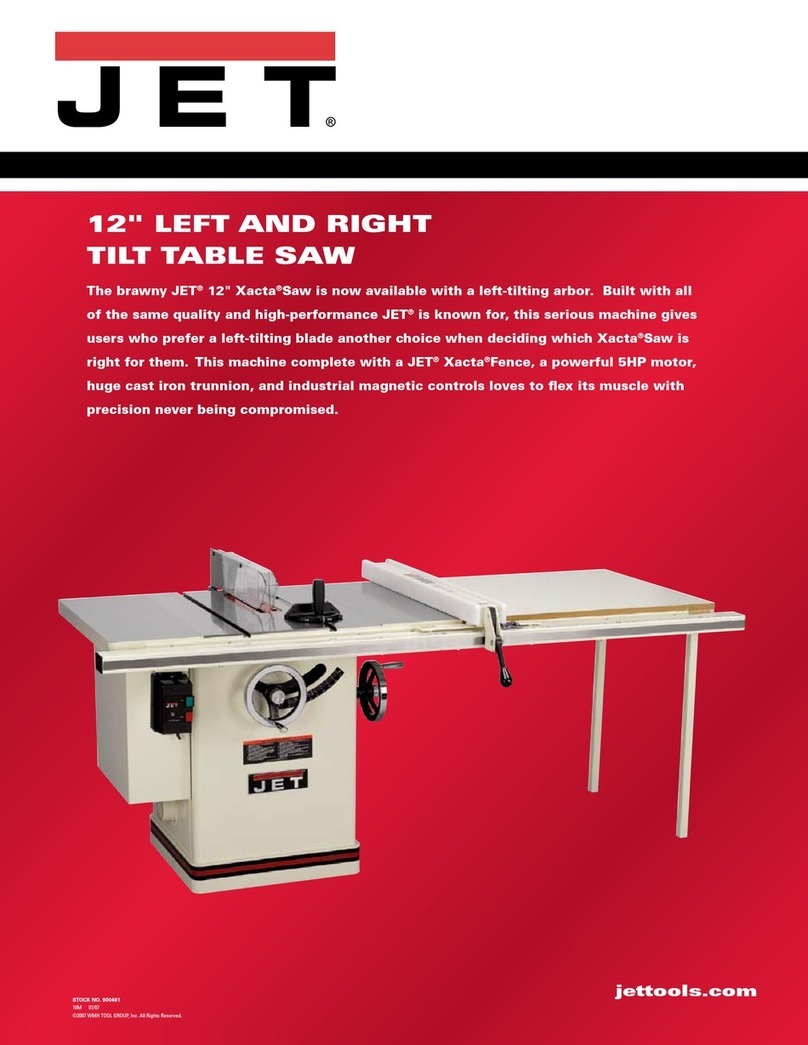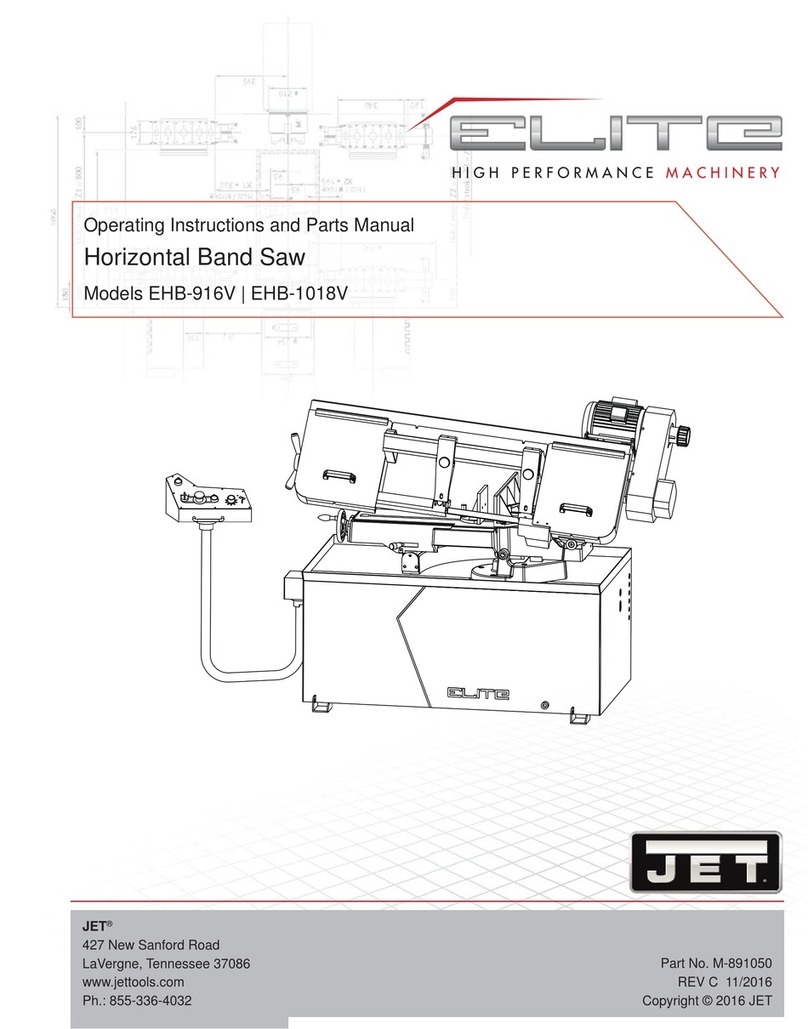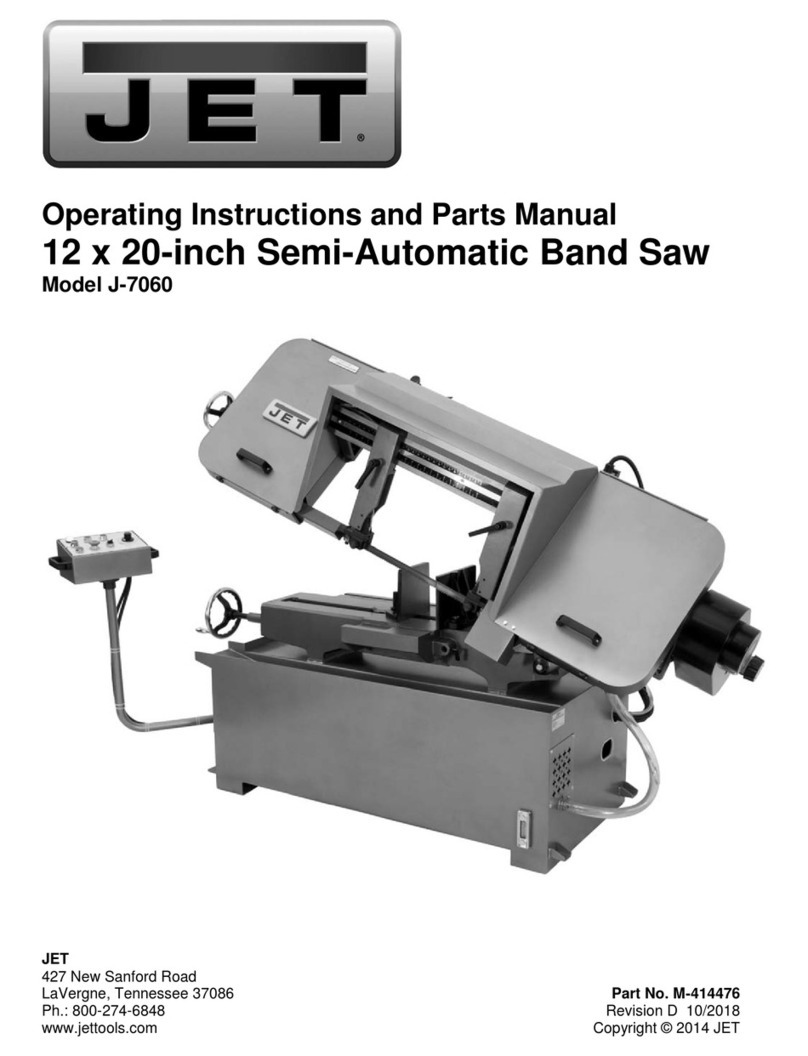Keep children and visitors a safe distance from the work
area.
Never reach into the machine while it is operating or running
down.
Never leave a running machine unattended. Before you
leave the workplace switch off the machine.
Do not operate the electric tool near inflammable liquids or
gases.
Observe the fire fighting and fire alert options, for example
the fire extinguisher operation and place.
Do not use the machine in a dump environment and do not
expose it to rain.
Wood dust is explosive and can also represent a risk to
health.
Dust form some tropical woods in particular, and from
hardwoods like beach and oak, is classified as a
carcinogenic substance.
Always use a suitable dust extraction device
Before machining, remove any nails and other foreign bodies
from the work piece.
Specifications regarding the maximum or minimum size of
the work piece must be observed.
Cut thin or thin-walled work-piece only with fine-toothed saw
blades.
Never cut several work-pieces at the same time –and also
no bundles containing several individual pieces. Risk of
personal injury if individual pieces are caught by the saw
blade uncontrolled.
When cutting round stock, use a suitable jig to prevent the
work-piece from turning.
Never cut work-pieces containing the following materials:
-Ropes, strings, cords, cables and wires.
Do not force the power tool. It will do a better and safer job
and give you much better service if it is used at the rate for
which it was designed.
Do not remove chips and work piece parts until the machine
is at a complete standstill.
Never operate with the guards not in place –serious risk of
injury!
Do not stand on the machine.
Connection and repair work on the electrical installation may
be carried out by a qualified electrician only.
Always unwind any extension cords fully.
Have a damaged or worn cord replaced immediately.
Do not use the machine when the ON-OFF switch does not
operate correctly.
The use of accessories other than those recommended in
this manual can create a safety hazard.
Make all machine adjustments or maintenance with the
machine unplugged from the power source.
When installing a new sawblade make sure that it matches
the raving knife.
The raving knife thickness must be in between sawblade
body thickness and width of cut.
Make sure that the sawblade is suitable for the work piece
material to be cut.
Use only sawblades according to EN 847-1
Never use sawblades made from High Speed Steel (HSS).
Remove defective sawblades immediately.
A worn table insert must be replaced.
3.3 Remaining hazards
When using the machine according to regulations some
remaining hazards may still exist
The moving sawblade in the work area can cause injury.
Broken saw blades can cause injuries.
Thrown workpieces can lead to injury.
Tipping of the workpiece due to insufficient support can lead
to injury.
Wood chips and sawdust can be health hazards. Be sure to
wear personal protection gear such as safety goggles ear-
and dust protection.
Use a suitable dust exhaust system.
The use of incorrect mains supply or a damaged power cord
can lead to injuries caused by electricity.
The type and condition of the sawblade is important in
keeping the noise level as low as possible.
This does not negate the fact that extra safety equipment
such as ear protection must be used.
4. Machine specifications
4.1 Technical data
Machine Table 800x385 mm
Rear extension table 310x500mm
Right extension table 800x400mm
Sliding table size 1600x270mm
Max. travel of sliding table 1600mm
Max. length of cut 1350mm
Crosscut table 680 x 580mm
Cross Cut Fence 1200 (2200)mm
Sawblade diameter Ø 250 - 315 mm
Blade bore diameter Ø 30 mm
Blade speed no 4700 rpm
Scoring blade diameter Ø90mm
Scoring blade bore diameter Ø 20mm
Scoring blade speed no 8700 rpm
Cutting height at 90°/45° 100 / 80 mm
Tilting range of blade 90°- 45°
Max Distance-blade to rip fence 1220mm
Dust port diameter 100mm
Weight 250 kg
Mains 400V ~3/PE 50Hz
Motor output power P2=3.0 kW S1
Reference current 6.6 A
Extension cord (H07RN-F) 4x1,5mm²
Installation fuse protection 16A
